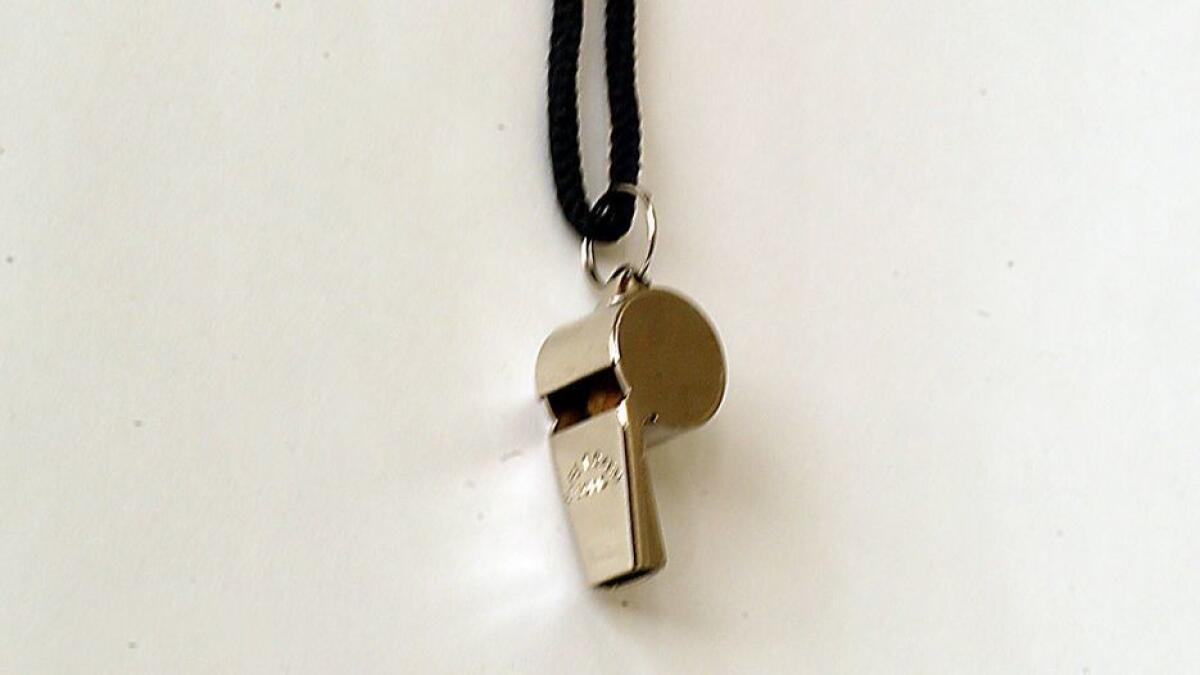Need an emergency kit list? Take this pro’s advice

Sure, we all intend to have our emergency kits packed and ready to go, but how many of us really get around to making it happen?
Let’s change that.
We asked Helen Chavez, assistant director with the Los Angeles County Office of Emergency Management, to give us some tips for emergency prep.
Top of her list is something that’s actually free: a conversation with your loved ones about your emergency plans. Specifically, what’s the plan for everyone to get out of your house, where will you all meet once you’re safely out, and how can you contact each other if you’re not at home when disaster strikes?
(By the way, the best option for check-in calls is to choose a point person who lives out of state, Chavez said, because those lines will often still work even after local telephone lines go down. And know that text messages often go through when regular phone calls won’t work, so don’t give up if you can’t make a call, and try texting instead.)
Ideally, Chavez said, we should all have three emergency kits — one next to the bed, one in our car and one at our workplace.
That may not be possible in all cases, but many survival items are inexpensive and sometimes “extras” are already lying around our homes, so you might start by shopping your junk drawers and garage.
For instance, paper, pencils, a hefty roll of duct tape and some strong cord are on almost everyone’s emergency kit list, along with a well-stocked first-aid kit, which you can build yourself or purchase already built online. We like the American Red Cross’ family first aid kit for $35, which includes an emergency first-aid guide. Chavez recommends using basic backpacks for emergency kits because they’re easy to grab and go. “They don’t have to be anything special,” she said. “Just simple ones like you use for school.”
Start now, check a few things off your list each week — enough food and water per person for three days, a grab-and-go supply of necessities such as daily medications and pet food, a stack of cash in small denominations, an envelope containing important paperwork you don’t want to leave behind — and soon you’ll be ready for an emergency that we all hope never happens.
And if you need any more inspiration to get going, listen to KPCC’s gripping podcast, “The Big One: Your Survival Guide.” Here are Chavez’s top picks for must-have items for an emergency kit:
Let there be light
When disaster strikes, our power sources are one of the first things to go, and they can often stay gone for weeks at a time. Chavez recommends a pack of glow sticks and simple flashlights, which are easy to carry and store. Be sure to include a supply of batteries for the flashlight! Or better still, include flashlights that are built into solar-powered radios.
RELATED: Why old brick buildings can collapse in an earthquake »
Just whistle
In earthquake country, it’s vital to make yourself heard, even under rubble. “You can grow hoarse from shouting in a matter of minutes,” Chavez said. Whistles are cheap noisemakers, small and easy to carry and you can find them at most hardware stores.
RELATED: How to keep your pets safe in an earthquake »

AM-FM radios
Once the power goes out, radio waves may be your only connection with the outside world. Any battery-powered AM-FM radio is crucial during an emergency, but many models now include solar panels and hand cranks to power their rechargeable batteries. Chavez doesn’t have specific recommendations, but one of Amazon’s top sellers is RunningSnail’s Emergency Hand Crank Self Powered AM/FM NOAA Solar Weather Radio with LED Flashlight, which also includes a power bank for cellphones. About $20.
Power packs
Cellphones and pads are great survival tools, because you can download all kinds of useful information and use it for reference in times of need. But those devices are useless once they run out of power. Power packs can provide multiple charges to prolong the life of your devices, until you find a place to recharge. One of Amazon’s top sellers is the Anker PowerCore 20100 for $40, which promises to provide nearly seven charges for an iPhone7 or five for a Galaxy S6. (Remember to keep them charged up so they’re ready when you need them.)
Wrap them in foil
Disasters don’t care if it’s cold outside, but you will. Foil blankets, also known as space blankets, are inexpensive, lightweight and fold up to almost nothing, but they can keep you warm when you’re forced to shelter outside. Better yet, buy a Mylar sleeping bag, such as Delmera Emergency Survival Sleeping Bag for $11 (two for $19), which folds up to the size of a cellphone. The blankets — which cost less than $2 — can be used as ground covers or a shawl.

Ready for more?
For more recommended emergency gear, check out the Los Angeles County’s Emergency Survival Guide (available in 13 languages) at lacounty.gov/emergency and the Federal Emergency Management Agency’s Emergency Supply List at ready.gov/build-a-kit#
More to Read
Sign up for The Wild
We’ll help you find the best places to hike, bike and run, as well as the perfect silent spots for meditation and yoga.
You may occasionally receive promotional content from the Los Angeles Times.







